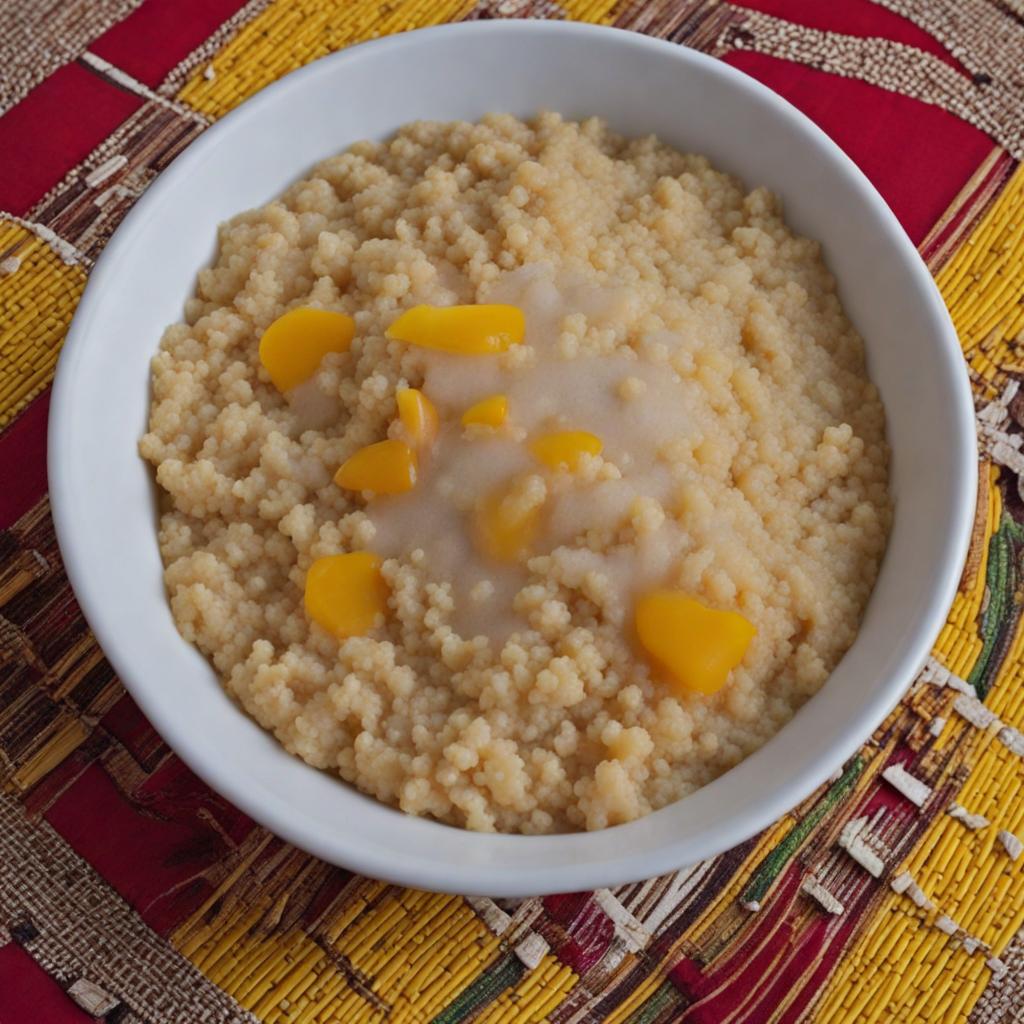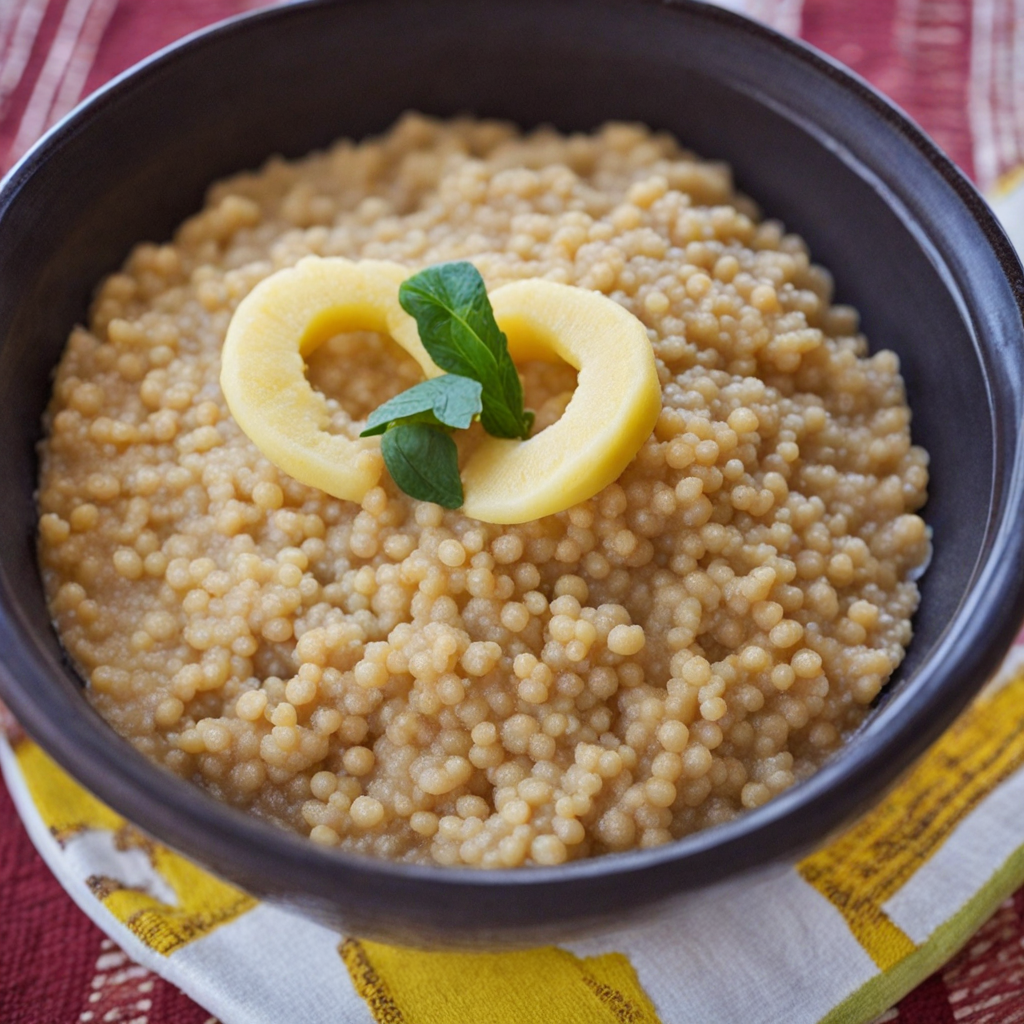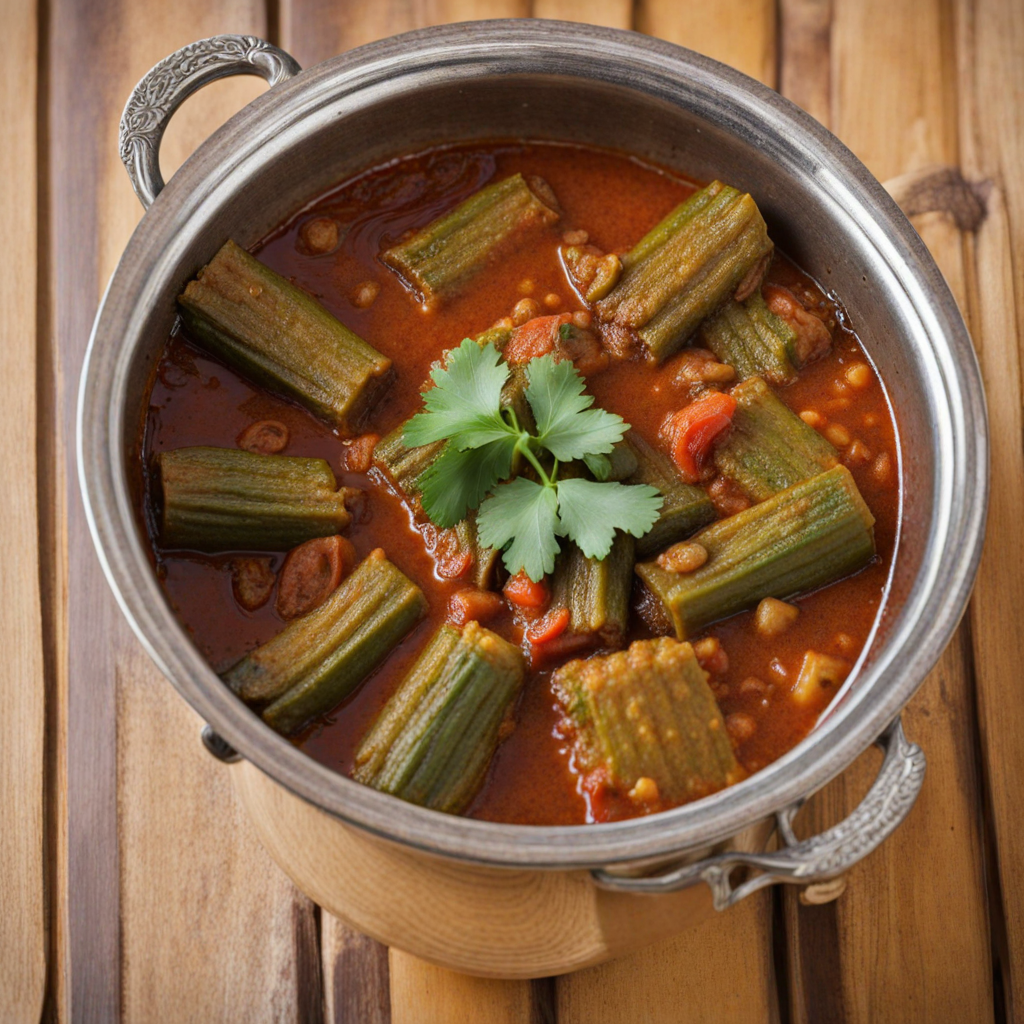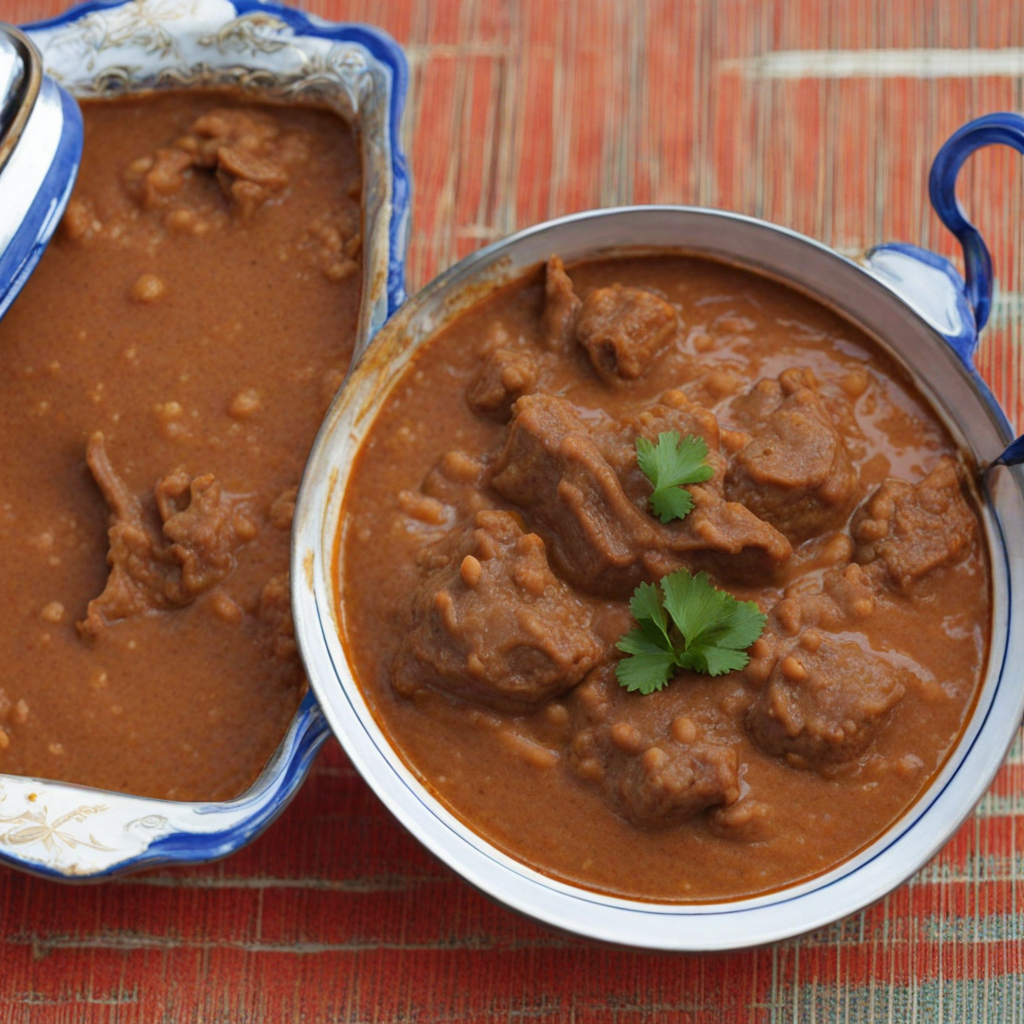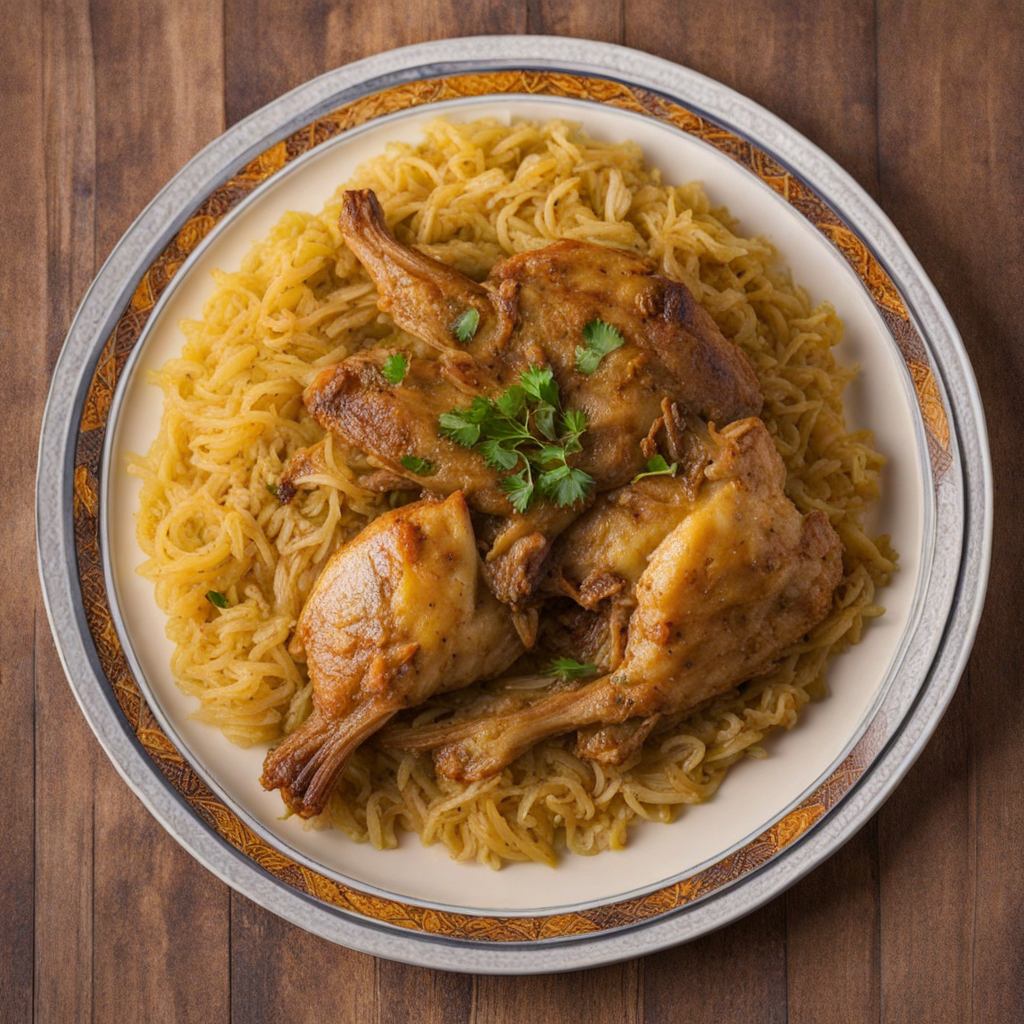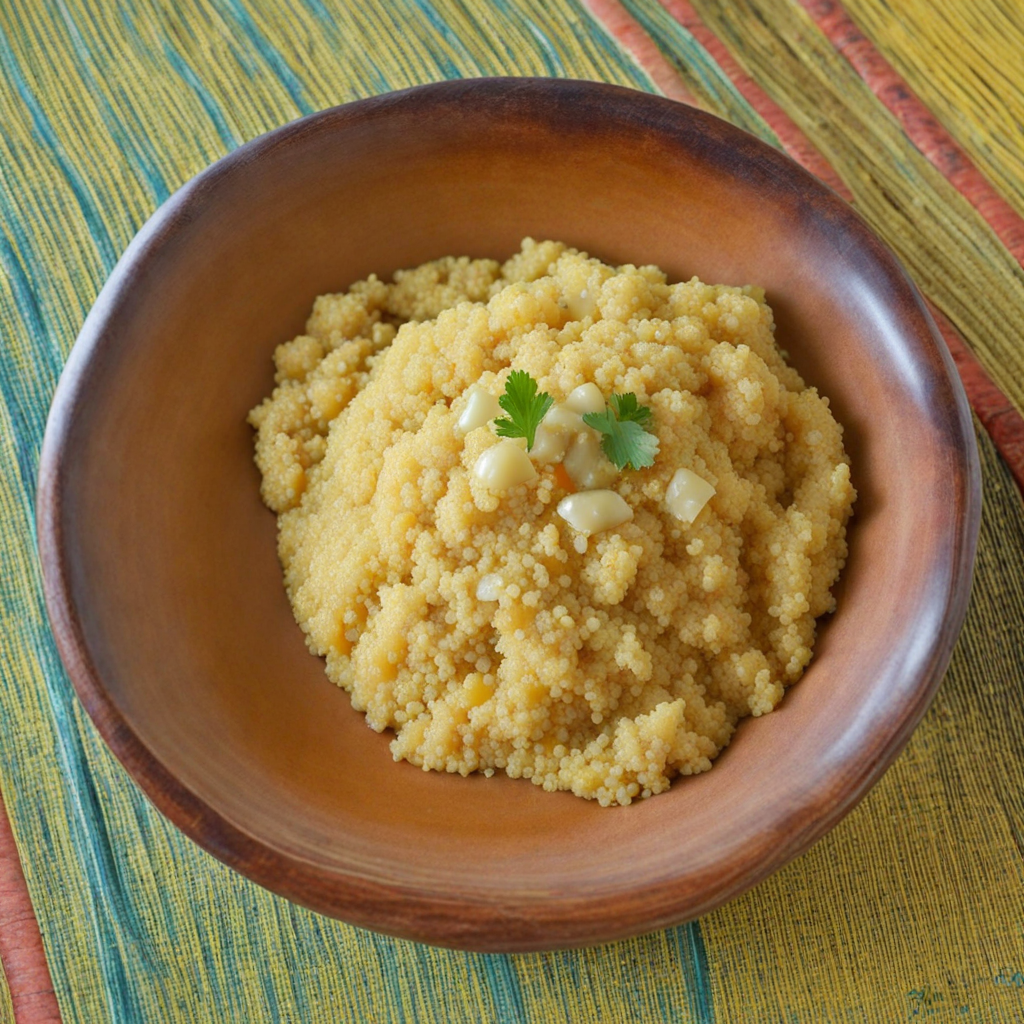Fatu
Fatu is a traditional Senegalese dish that beautifully encapsulates the rich culinary heritage of West Africa. This vibrant dish is primarily made with a base of rice, which is often complemented by a variety of meats such as chicken, beef, or fish, and a colorful medley of vegetables. The rice is cooked to fluffy perfection, allowing it to soak up the bold flavors of the spices and ingredients that define Fatu. The dish is often seasoned with a blend of spices like ginger, garlic, and chili, creating a delightful balance of heat and aromatic quality that entices the palate. What makes Fatu truly unique is the way it showcases Senegal's agricultural bounty. Often, seasonal vegetables such as carrots, bell peppers, and okra are incorporated, adding both texture and nutritional value. The cooking method typically involves simmering the ingredients together, allowing the flavors to meld harmoniously. This communal dish is frequently enjoyed during family gatherings or celebrations, promoting a sense of togetherness that is integral to Senegalese culture. To experience Fatu is to embark on a journey of taste that reflects the heart and soul of Senegal. The colorful presentation of the dish, often served on a large platter, invites diners to share and savor the meal together. Each bite reveals layers of flavor, with the rice serving as a neutral canvas that highlights the richness of the meats and the freshness of the vegetables. Fatu not only satisfies hunger but also offers a glimpse into the vibrant traditions and communal spirit of Senegalese dining.
How It Became This Dish
Fatu: A Cultural Culinary Gem of Senegal Fatu is a traditional dish that holds a special place in the culinary landscape of Senegal, a country known for its rich tapestry of flavors and diverse food culture. This simple yet hearty dish consists primarily of rice and fish, often accompanied by a spicy sauce, vegetables, and various seasonings. To understand the significance of Fatu, we must delve into its origins, cultural importance, and how it has evolved over time. #### Origins The roots of Fatu can be traced back to the coastal regions of Senegal, where fishing has been a vital occupation for centuries. The Senegalese coastline, stretching along the Atlantic Ocean, is abundant with a variety of fish species, making it an essential food source for local communities. The dish reflects the country’s reliance on seafood, particularly in areas like Dakar and Saint-Louis, where fishing is integral to both the economy and the diet. Fatu is believed to have originated from the Wolof people, one of the largest ethnic groups in Senegal. The Wolof have long celebrated their culinary heritage, and Fatu is a prime example of the fusion of local ingredients, culinary techniques, and cultural traditions. The incorporation of rice, a staple grain in many African cuisines, into Fatu underscores the influence of trade routes that brought rice from Asia to West Africa. This blending of cultures is a hallmark of Senegalese cuisine, which is characterized by its adaptability and the integration of various culinary practices. #### Cultural Significance Fatu is more than just a dish; it is a symbol of community and togetherness. In Senegalese culture, food plays a crucial role in social gatherings and familial bonds. Fatu is often served at communal meals, celebrations, and special occasions, bringing people together to share not only the food but also stories, laughter, and traditions. The act of sharing Fatu embodies the spirit of hospitality that is deeply ingrained in Senegalese culture. In many households, Fatu is prepared as a communal dish, where family members gather around a large platter to enjoy the meal together. This practice fosters a sense of unity and reinforces the importance of family ties. Furthermore, Fatu is often accompanied by the traditional Senegalese drink, bissap (made from hibiscus flowers), which enhances the dining experience and adds to the convivial atmosphere. The cultural significance of Fatu extends beyond family gatherings. It is also commonly enjoyed during religious celebrations, such as Eid and Tabaski, when families come together to honor their traditions and share meals. The dish symbolizes abundance and is a testament to the Senegalese values of sharing and caring for one another. #### Ingredients and Preparation Fatu’s primary ingredients—rice and fish—reflect the local bounty and the culinary techniques passed down through generations. The rice used in Fatu is often cooked with a rich blend of spices, including garlic, ginger, and chili peppers, which infuse flavor and heat into the dish. The fish, typically fresh and locally sourced, is marinated and grilled or fried to perfection before being served alongside the rice. In its preparation, Fatu can vary widely depending on regional preferences and family traditions. Some variations incorporate vegetables such as carrots and eggplants, while others might include a tangy tomato sauce that complements the fish. The diversity in preparation styles highlights the adaptability of Fatu, allowing it to cater to different tastes and occasions. #### Evolution Over Time As Senegal has evolved, so too has Fatu. The dish, while rooted in tradition, has adapted to the changing culinary landscape influenced by globalization and migration. With the influx of new ingredients and cooking methods, contemporary interpretations of Fatu have emerged, leading to innovative takes on the classic dish. In urban areas like Dakar, Fatu has become a popular option in restaurants and food stalls, melding traditional recipes with modern culinary trends. Chefs have begun experimenting with different types of fish, incorporating international flavors, and presenting the dish in novel ways. The rise of food tourism in Senegal has also contributed to the dish’s popularity, as visitors seek to experience authentic Senegalese cuisine. Moreover, the growing awareness of health and nutrition has led some cooks to explore healthier versions of Fatu, emphasizing whole grains, fresh vegetables, and sustainable fishing practices. This evolution reflects a broader trend in Senegalese cuisine, where traditional dishes are reimagined to align with contemporary dietary preferences while still honoring their cultural roots. #### Conclusion Fatu embodies the essence of Senegalese culinary heritage, blending tradition, community, and history into a single dish. Its origins in the coastal fishing communities of Senegal highlight the importance of local ingredients and the cultural significance of food in social cohesion. As Fatu continues to evolve, it remains a beloved dish that tells the story of a nation’s rich culinary past while adapting to the present. Through Fatu, we see the interplay of history, culture, and cuisine—a reminder of the power of food to connect people and celebrate traditions. Whether enjoyed at a family gathering, during a festive celebration, or in a bustling restaurant, Fatu remains a cherished symbol of Senegal’s vibrant culinary identity, inviting all to partake in its flavorful journey through time.
You may like
Discover local flavors from Senegal


